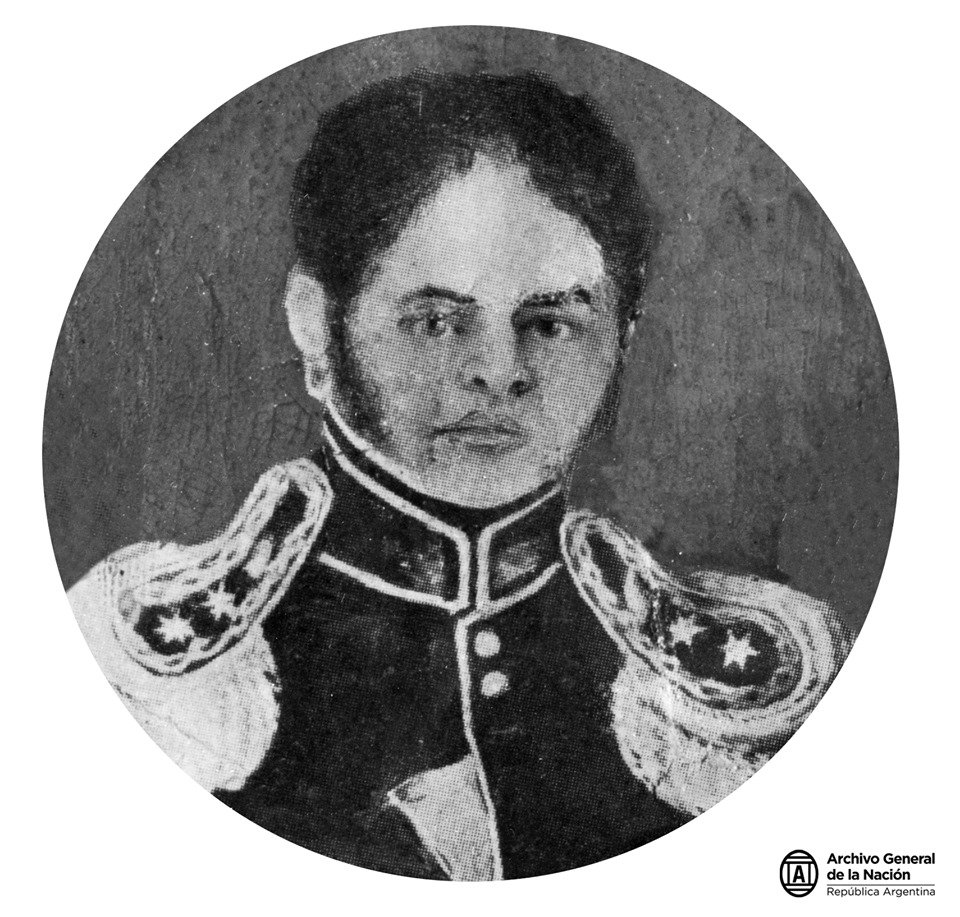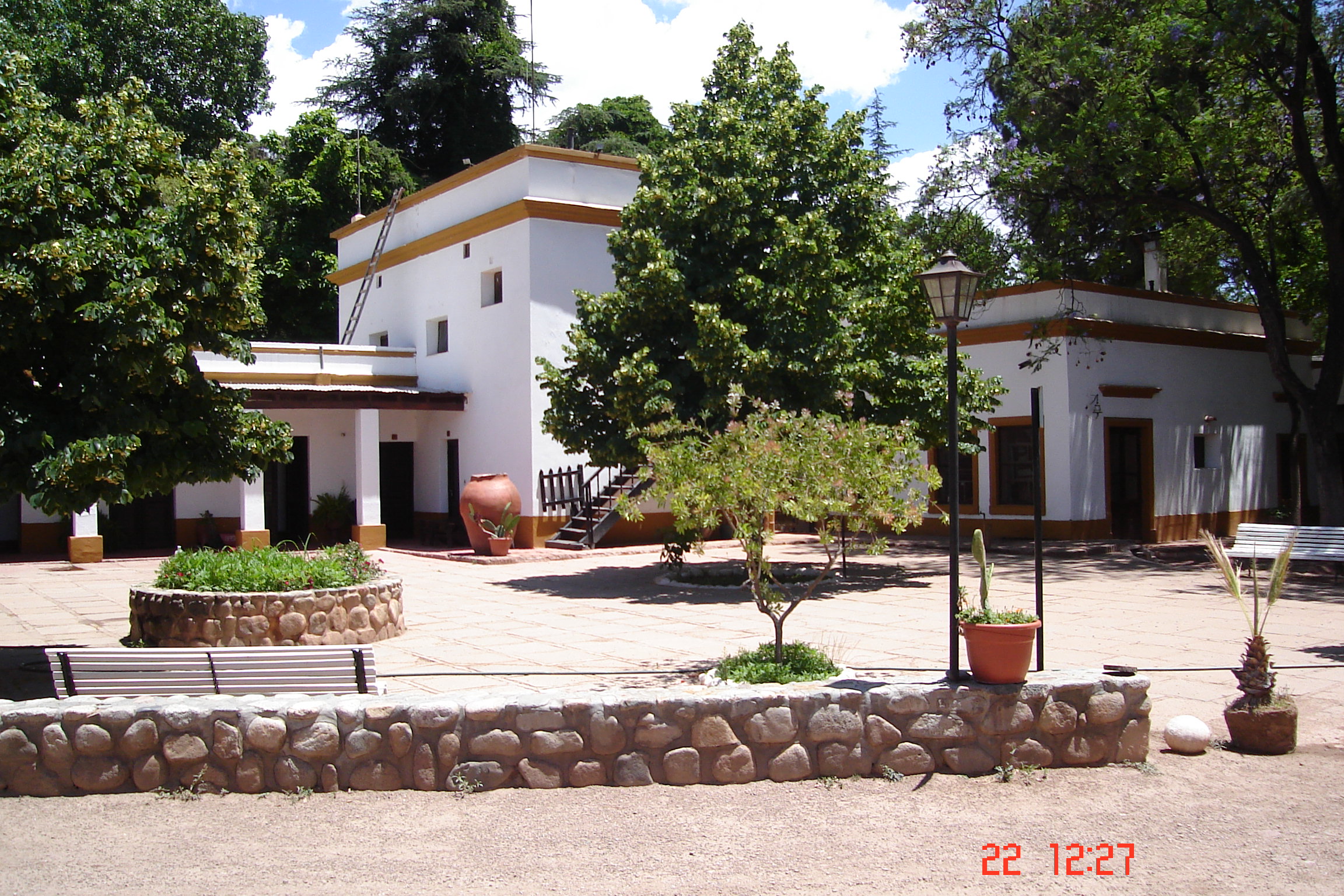|
Celestino Barcala
Celestino Barcala, the warrior son of Independence Colonel Lorenzo Barcala, was a key player on the Argentine civil wars in the north-west, reaching the rank of major national army. Biography Barcala took part in the revolution of May 1866 in the province of Catamarca against Miguel Molina, the commanding officer of Governor Victor Maubecín. With the rank of lieutenant, he was responsible for executing Estanislao Pucheta, a captain of a company of the civic guard, who was shot by a firing squad inside the barracks. Barcala denied him the last rites. At the time of the second invasion of Felipe Varela, Barcala was in charge of the vanguard of national forces. Varela, who was in Jáchal, ordered his lieutenant Estanislao Medina to occupy the village of Chilecito, which took effect on 18 February 1867. On the march toward the village he joined the leader Severo Chumbita. On March 4, Medina's army reached the outskirts of Tinogasta. Barcala asked Lt. Col. Meliton Cordova to "m ... [...More Info...] [...Related Items...] OR: [Wikipedia] [Google] [Baidu] |
Lorenzo Barcala
Lorenzo Barcala (1793 in Mendoza, Argentina – 1835 in Mendoza, August), was an Argentine military commander who participated in the Argentine civil wars on the side of the Unitarian Party, and one of the few black soldiers to reach the rank of colonel in that country. Early military career The son of slaves, he was also a slave during his childhood. He was released by the governor of Cuyo, General José de San Martín, but for unknown reasons did not join the Army of the Andes. He began his military career in 1818 as a soldier of the Regiment of ''Pardos'' ("mulattoes"). In 1820 he participated in the turmoil produced by the so-called ''Anarquía del año 20'', which had one of its epicenters in Cuyo. He was part of the army of General Bruno Moron, who fought against Chilean General José Miguel Carrera, and after the death of Moron, fought in the battle of Punta del Medano orders of José Albino Gutierrez. In 1824 he participated in a failed attempt against Governor G ... [...More Info...] [...Related Items...] OR: [Wikipedia] [Google] [Baidu] |
Argentine Army
The Argentine Army ( es, Ejército Argentino, EA) is the land force branch of the Armed Forces of the Argentine Republic and the senior military service of Argentina. Under the Argentine Constitution, the president of Argentina is the commander-in-chief of the Armed Forces, exercising his or her command authority through the Minister of Defense. The Army's official foundation date is May 29, 1810 (celebrated in Argentina as the ''Army Day''), four days after the Spanish colonial administration in Buenos Aires was overthrown. The new national army was formed out of several pre-existing colonial militia units and locally manned regiments; most notably the Infantry Regiment "Patricios", which to this date is still an active unit. , the active element of the Argentine Army numbered some 70,600 military personnel. History Several armed expeditions were sent to the Upper Peru (now Bolivia), Paraguay, Uruguay and Chile to fight Spanish forces and secure Argentina's newly gain ... [...More Info...] [...Related Items...] OR: [Wikipedia] [Google] [Baidu] |
Catamarca Province
Catamarca () is a province of Argentina, located in the northwest of the country. The province had a population of 334,568 as per the , and covers an area of 102,602 km2. Its literacy rate is 95.5%. Neighbouring provinces are (clockwise, from the north): Salta, Tucumán, Santiago del Estero, Córdoba, and La Rioja. To the west it borders the country of Chile. The capital is San Fernando del Valle de Catamarca, usually shortened to Catamarca. Other important cities include Andalgalá, Tinogasta, and Belén. Geography Most of Catamarca's territory of 102,602 square kilometers (2.7% of the country total), is covered by mountains (80%), which can be grouped into four clearly differentiated systems: the Pampean sierras, in the east and center; the Narváez-Cerro Negro-Famatina system, in the west; the cordilleran-Catamarca area of transition, in the western extreme; the Puna, an elevated portion, in the northwest. Located in an arid and semi-arid climate zone, the scarce w ... [...More Info...] [...Related Items...] OR: [Wikipedia] [Google] [Baidu] |
Last Rites
The last rites, also known as the Commendation of the Dying, are the last prayers and ministrations given to an individual of Christian faith, when possible, shortly before death. They may be administered to those awaiting execution, mortally injured, or terminally ill. Last rites cannot be performed on someone who has already died. Last rites, in sacramental Christianity, can refer to multiple sacraments administered concurrently in anticipation of an individual's passing. Catholic Church The Latin Church of the Catholic Church defines Last Rites as Viaticum (Holy Communion administered to someone who is dying), and the ritual prayers of Commendation of the Dying, and Prayers for the Dead. The sacrament of Anointing of the Sick is usually postponed until someone is near death. Anointing of the Sick has been thought to be exclusively for the dying, though it can be received at any time. Extreme Unction (Final Anointing) is the name given to Anointing of the Sick when ... [...More Info...] [...Related Items...] OR: [Wikipedia] [Google] [Baidu] |
Chilecito
Chilecito is a city in the Argentine province of La Rioja, and head of the department of Chilecito. Overview The city is located in the valley formed by the ''Sierras de Velazco'' to the east, and the ''Sierras de Famatina'' to the west. The city was founded in 1715 by Spanish colonizers. Chilecito still preserves the cable-car of ''La Mejicana'' mine built by Bleichert which is part of the city mining past that saw its peak at the end of the 19th century. Chilecito is surrounded by an oasis of irrigation, which has been expanded by way of supplements from underground waters. A great part of agricultural land is used for the cultivation of vineyards because the most significant industrial activity is based in wine-cellars. Walnut and fruit trees are also cultivated and their product is locally processed. The Argentine educator, lawyer, senator, governor and historian Joaquín V. González was raised in the vicinity of Chilecito. He also used to spend his vacation in a home th ... [...More Info...] [...Related Items...] OR: [Wikipedia] [Google] [Baidu] |
Tinogasta
Tinogasta () is a city in the west of the , on the right-hand shore of the Abaucán River, about 280 km from the provincial capital San Fernando del Valle de Catamarca. It had about 11,500 inhabitants at the . It is the head town of the department of the same name. The name of the city comes from the Kakana words ''tino'' ("meeting") and ''gasta'' ("town"). Tinogasta is a tourist site. It has access to the mountains for adventure tourism, hot springs, and archaeological museums. The basis of the local economy is agriculture, focused on vine. Climate The Köppen Climate Classification subtype for this climate is "BSk BSK is a three-letter abbreviation that may refer to: Sports * OFK Beograd, Serbian football club * FK BSK Borča, Serbian football club * FK BSK Batajnica, Serbian football club * FK BSK Banja Luka, Bosnian-Herzegovinian football club * FK BSK L ...". (Tropical and Subtropical Steppe Climate). References External links * {{Authority control Popul ... [...More Info...] [...Related Items...] OR: [Wikipedia] [Google] [Baidu] |
Piastre
The piastre or piaster () is any of a number of units of currency. The term originates from the Italian for "thin metal plate". The name was applied to Spanish and Hispanic American pieces of eight, or pesos, by Venice, Venetian traders in the Levant in the 16th century. These pesos, minted continually for centuries, were readily accepted by traders in many parts of the world. After the countries of Latin America had gained independence, pesos of Mexico began flowing in through the trade routes, and became prolific in the Far East, taking the place of the Spanish pieces of eight which had been introduced by the Spanish at Manila, and by the Portuguese people, Portuguese at Malacca. When the French French Indochina, colonised Indochina, they began issuing the new French Indochinese piastre (''piastre de commerce''), which was equal in value to the familiar Spanish and Mexican pesos. In the Ottoman Empire, the word piastre was a colloquial European name of Kuruş. Successive curr ... [...More Info...] [...Related Items...] OR: [Wikipedia] [Google] [Baidu] |
Year Of Birth Unknown
A year or annus is the orbital period of a planetary body, for example, the Earth, moving in its orbit around the Sun. Due to the Earth's axial tilt, the course of a year sees the passing of the seasons, marked by change in weather, the hours of daylight, and, consequently, vegetation and soil fertility. In temperate and subpolar regions around the planet, four seasons are generally recognized: spring, summer, autumn and winter. In tropical and subtropical regions, several geographical sectors do not present defined seasons; but in the seasonal tropics, the annual wet and dry seasons are recognized and tracked. A calendar year is an approximation of the number of days of the Earth's orbital period, as counted in a given calendar. The Gregorian calendar, or modern calendar, presents its calendar year to be either a common year of 365 days or a leap year of 366 days, as do the Julian calendars. For the Gregorian calendar, the average length of the calendar year ( ... [...More Info...] [...Related Items...] OR: [Wikipedia] [Google] [Baidu] |
1867 Deaths
Events January–March * January 1 – The John A. Roebling Suspension Bridge, Covington–Cincinnati Suspension Bridge opens between Cincinnati, Ohio, and Covington, Kentucky, in the United States, becoming the longest single-span bridge in the world. It was renamed after its designer, John A. Roebling, in 1983. * January 8 – African-American men are granted the right to vote in the District of Columbia. * January 11 – Benito Juárez becomes Mexican president again. * January 30 – Emperor Kōmei of Japan dies suddenly, age 36, leaving his 14-year-old son to succeed as Emperor Meiji. * January 31 – Maronite nationalist leader Youssef Bey Karam leaves Lebanon aboard a French ship for Algeria. * February 3 – ''Shōgun'' Tokugawa Yoshinobu abdicates, and the late Emperor Kōmei's son, Prince Mutsuhito, becomes Emperor Meiji of Japan in a brief ceremony in Kyoto, ending the Late Tokugawa shogunate. * February 7 – West Virginia University is established in Morgan ... [...More Info...] [...Related Items...] OR: [Wikipedia] [Google] [Baidu] |
Afro-Argentine People
Afro-Argentines are people in Argentina of primarily Sub-Saharan African descent. The Afro-Argentine population is the result of people being brought over during the transatlantic slave trade during the centuries of Spanish domination in the region and immigration from Africa. During the 18th and 19th centuries they accounted for up to fifty percent of the population in certain cities, and had a deep impact on Argentine culture. Some old theories held it that in the 19th century the Afro-Argentine population declined sharply due to several factors, such as the Argentine War of Independence (c. 1810–1818), high infant mortality rates, low numbers of married couples who were both Afro-Argentine, the War of the Triple Alliance, cholera epidemics in 1861 and 1864 and a yellow fever epidemic in 1871. Research in recent decades cites a strong racial intermixing with whites and amerindians in the 18th and 19th centuries as the main reason for the decline of the black population i ... [...More Info...] [...Related Items...] OR: [Wikipedia] [Google] [Baidu] |







